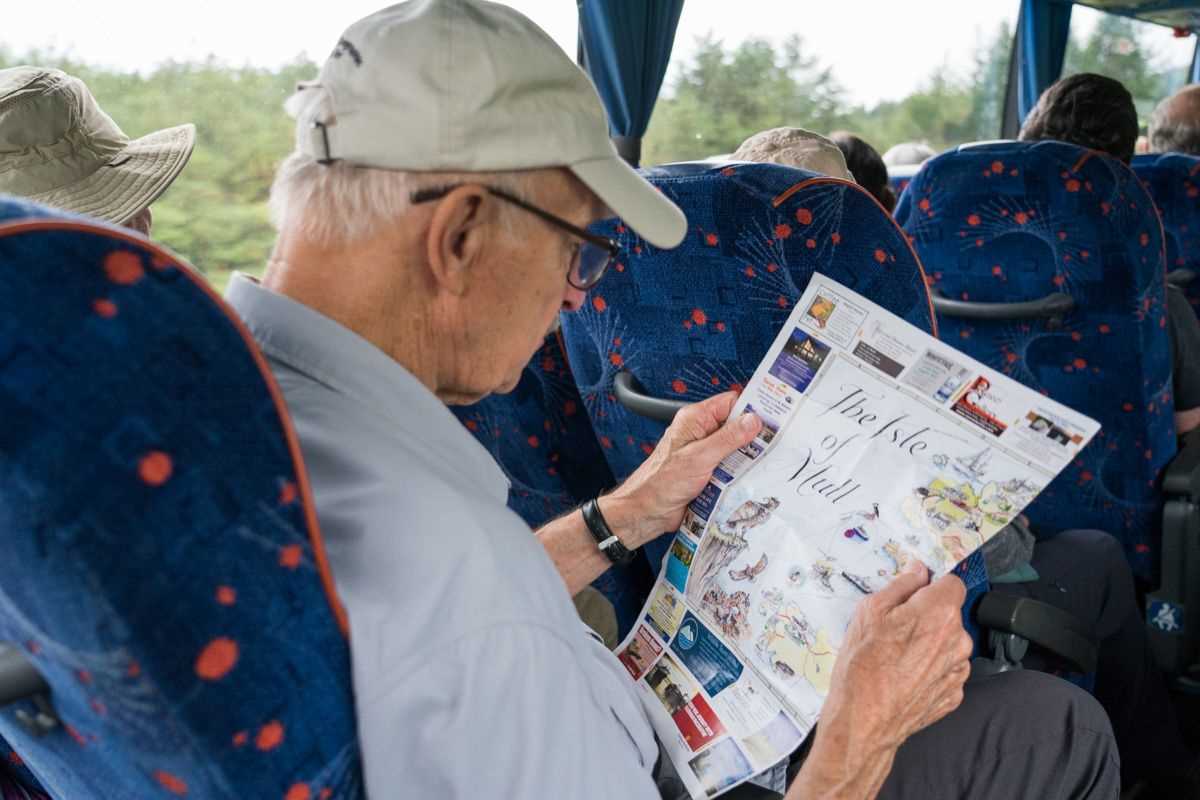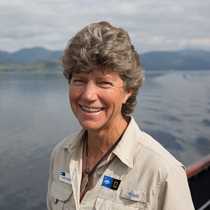A mosaic of shining silver and gray clouds traveled across the sky, highlighted by rainbows and bits of blue. That was early morning in Oban. By breakfast, rain pattered against the ship’s windows and our days of sunshine seemed to have ended. Still, we were off, with a beautiful sail from Oban to the Isle of Mull. We put in at the village of Craignure, where we disembarked and boarded a bus, headed for Iona. Our route crossed the southern edge of Mull, with Sheila our bus driver providing informative commentary about the island on the way.
Mull is of igneous origin. Its high peak, Ben More, is an ancient 50- to 60-million-year-old volcano that spewed layers of basalt, creating most of the island. On reaching Fionnphort, we moved into more ancient 450-million-year-old granite, formed during the Caledonian orogeny. In Fionnphort, we left the bus for a quick ferry crossing to Iona, plunging into 3-billion-year-old ancient gneiss—meaning the island of Iona is much older than the adjacent Isle of Mull. Perhaps that’s why people step onto Iona and often feel there’s something special about the land.
Of course, that sentiment may derive from the long human history of Iona. This tiny island has been a sacred site since Saint Columba established a monastery there in 563 AD. From Iona, St. Columba and others spread Celtic Christianity across the pagan Pictish country that we now know as Scotland. Today, the island holds the ruins of a nunnery and the restored Benedictine abbey that was established around 1200 AD by the sons of Somerled, known as King of the Isles. Adjacent to the abbey is the king’s graveyard, where Scottish, Irish, and Norwegian kings have been buried over the centuries, including Duncan, MacAlpine, and Macbeth.
We spent the morning exploring the island, walking through the abbey and to the far north side of Iona, with its sandy beach and polished red granite outcrops. After lunch at the Columba Hotel, we backtracked with a short ferry ride, a bus crossing, and then a stop at Duart Castle. Originally constructed in the mid-13th century, the castle fell to ruins after the Macleans lost it paying off debts in the 17th century. The Macleans bought back the castle and restored it beginning in the early 1900s. The castle now functions as both a museum and a residence, with exhibits and displays for visitors. We wandered through the restored rooms, up and down spiraling staircases, and into rooms refurbished and decorated to provide the atmosphere of an old clan castle.
Back on board Lord of the Glens, we heard a presentation from the Hebridean Whale and Dolphin Trust. This group monitors Scotland’s marine mammals and supports a Community Sightings network. Recently, HWDT’s research resulted in the creation of a Special Area of Conservation designed to protect harbor porpoises. The pre-dinner presentation provided an overview of what species exist in the Scottish coastal waters as well as information on current conservation efforts.
We berthed in Tobermory, a charismatic village with colorful buildings lining the shore. Guests were free to wander the town before heading off to sleep in preparation for tomorrow’s activities.









